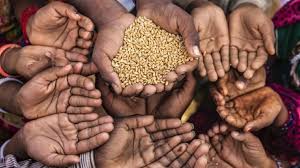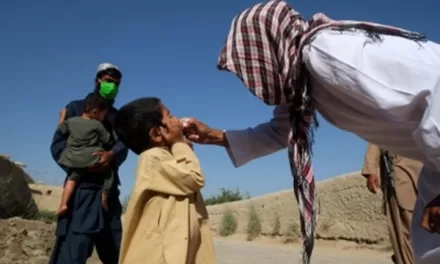India has once again found itself in a concerning position in the Global Hunger Index (GHI) for 2024, ranking 105th out of 127 countries. The country remains classified under the ‘serious’ hunger category, according to the report published jointly by Concern Worldwide and Welthungerhilfe. This year’s findings paint a grim picture of India’s ongoing struggle with hunger and malnutrition, raising significant concerns about the nation’s efforts to tackle this crisis.
Key Findings: A Stark Reality
India’s GHI score of 27.3 highlights several alarming statistics. The report reveals that 13.7% of the population suffers from undernourishment, pointing to widespread food insecurity. The issue of childhood malnutrition remains particularly troubling, with 35.5% of children under five being stunted, indicating chronic undernutrition and a lack of proper growth and development. Additionally, the child mortality rate stands at 2.9%, a figure that reflects the compounded effects of poor healthcare, inadequate nutrition, and social inequalities.
Globally, the GHI has reported that 733 million people face daily hunger, a crisis exacerbated by conflicts and wars in various regions, including Gaza and Sudan. These conflicts disrupt food production and supply chains, further plunging affected populations into extreme hunger and malnutrition.
South Asia: A Divided Region in Hunger Levels
India’s ranking is particularly stark when compared to its neighbors. Bangladesh, Nepal, and Sri Lanka have all shown moderate hunger levels, according to the 2024 GHI, indicating a relative improvement in their food security measures. However, like India, Pakistan and Afghanistan also fall under the ‘serious’ hunger category, underscoring the common challenges faced by South Asian nations with large populations, socio-economic inequalities, and strained resources.
The contrast between India’s hunger situation and its regional neighbors raises questions about the effectiveness of its current policies aimed at reducing malnutrition. Programs like the National Food Security Act (NFSA) and Poshan Abhiyaan have been implemented, but the country’s large and diverse population continues to grapple with food insecurity at critical levels.
A Setback for the Global Zero Hunger Goal
The report also casts doubt on the global community’s ability to achieve the United Nations Sustainable Development Goal (SDG) 2 of ending hunger by 2030. With global hunger on the rise, particularly in conflict-ridden regions, the goal appears increasingly out of reach. India, as one of the world’s most populous nations, plays a critical role in the success of global hunger eradication efforts. Its current GHI ranking, however, signals that much more needs to be done to address the structural issues contributing to its persistent hunger problem.
The Road Ahead: A Call for Urgent Action
India’s troubling GHI ranking serves as a wake-up call for policymakers, development organizations, and civil society. While programs are in place, there is a clear need for more comprehensive and targeted interventions to improve food access, enhance nutrition, and support vulnerable populations, especially children. Agricultural reforms, investments in rural infrastructure, and addressing income inequalities will be crucial to reversing the current trend.
In conclusion, the 2024 Global Hunger Index has highlighted India’s urgent hunger crisis. As the country strives for development and growth, ensuring food security for all its citizens must be prioritized. The nation’s ability to overcome this challenge will not only shape its future but also impact the global fight against hunger.












